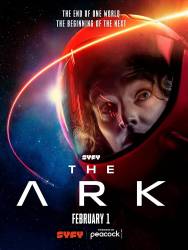Factual error: Trust called Proxima B an "eyeball" planet, meaning according to him a planet that does not spin on its own axis and always has one side facing the sun. That is incorrect. If only one side faces the sun it means the rotation on its axis and its revolution around the sun are the same.Otherwise, the planet would seasonally have all of its surface facing the sun once every solar year.
Factual error: Alicia realizes that the asteroid is actually a comet by its tail. However, earlier in the episode we are told we are far from any star (so no point in opening the solar sails). The thing is, comets only develop a tail when they are near a star, which blows gases off the comet with the solar wind (the same wind that could operate solar sails). So in reality, there would be no tail to this comet.
Two by Two - S1-E6
Factual error: They are headed to Proxima, the closest star to Earth, but somehow use another system, a binary star, to use solar sail propulsion to get to a planet to get uranium-238. There is no closer star.
Two by Two - S1-E6
Factual error: The ship is using solar sails to accelerate. The sails are far too small to make a significant change to the speed of the ark. Also, when they approach breakaway, the ship rumbles. There is no mechanism for a transient stress. It is not like breaking the sound barrier.
We Weren't Supposed to Be Awake - S1-E4
Factual error: Angus rushes to the bridge to tell the officers that the crystal that contaminated the glove was made from an unknown element, that's not on the periodic table. This means the element is heavier than the heaviest known element, Oganesson. In other words, it's a superheavy element. The problem is superheavy elements have an extremely short half-life time, usually measured by the milliseconds. Anything made from this element will dissipate before or shortly after it hits the ship. (00:40:00)
Factual error: When asked how the shuttle will move the large space ship, Alicia says, "We're in space. There's no gravity, resistance, or friction. Size doesn't matter, just force." However, Newton's second law still applies in space. F=m×a, or a=F/m. The acceleration is in direct ratio to the force and opposite ratio with the mass. In other words, given the force the shuttle's engines can apply, and the very large mass of the space ship, the acceleration the shuttle can produce is relatively small. (00:25:56)





